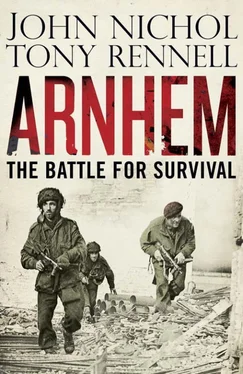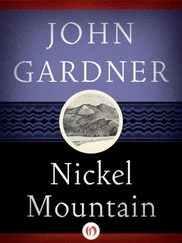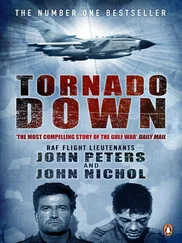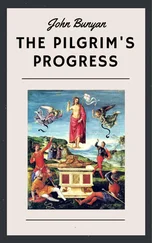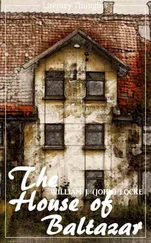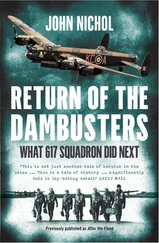Time is taking its toll on his unique generation of fighting men. Ron Brooker, the same age as Peter Clarke, was a sharp-shooter in his Arnhem days. Now his eyes are dimming. ‘I used to be quite a marksman,’ he laments, ‘but I can’t see a bloody thing these days.’ He’s a cheery soul, neighbours pop in all the time, and, as with Peter Clarke, we have to remind ourselves that this is a man who stood toe to toe with SS soldiers. ‘This was close-quarter killing with bullet and bayonet,’ he says. ‘It was brutal. I think I had every six-foot soldier in the German army coming through the windows!’ He draws a map of Arnhem on a scrap of paper to illustrate where he was at this moment or that. He has precious mementoes to share – the letters his mother sent to him and the ones he wrote to her from a prisoner-of-war camp in Germany, the War Office telegram his parents received telling them he was missing in action. As he shoves them back into a battered brown envelope, his eyes look damp with emotion.
On his walls are paintings that depict those glory days – ‘the best time of my life’. In one, a figure is standing amidst shattered buildings, and he can recall with photographic clarity how he was firing his rifle across that very scene. He is still haunted by the possibility that he accidentally shot one of his own side. It was all too easy in the chaos of intense and isolated actions along the constantly shifting and re-shaping front line. That chaos makes it hard to unravel the complex manoeuvrings of the twin and concurrent actions at Arnhem and Oosterbeek, and we have not attempted to reconstruct the battle in this way. Besides, one of the significant features of Arnhem was how the tidy pieces of military organization – the brigade, company and platoon structures – were swept aside by events and men fought shoulder to shoulder with those next to them, whatever the colour of their beret or the badge on their smock. This was no orderly set-piece battle, no neat chessboard of attack and defence. Rather it was a maze and a muddle, the confusing interweaving of a myriad of separate actions. Times and places merged and plotting one’s way can be as difficult as navigating the currents of the Rhine proved to be. It is easy to drown in detail.
But here, in this book, it is the grander and more glorious picture we re-create – the drama of individual men fighting on when all seemed lost, glued together by hope and comradeship. Those who led and directed them – the politicians, the generals, the brigadiers, even the colonels – are bit players in our narrative. They are the context (and important for that) but not the content. This is essentially the story of ordinary men – the likes of Peter Clarke and Ron Brooker, heroes all, though, with the modesty typical of their generation, they deny the very suggestion. You will also find here not only the battle-hardened professional infantrymen of the parachute brigades but others whose contributions are often overlooked – the sappers and the signallers, the pilots and the medics, the padres and the Poles. To those readers steeped in the Arnhem story, some of these figures will be familiar, but others are new, with untold tales to tell. What they have in common is that they can all say with hand on heart, ‘I was there.’
Being there was crucial. It is strongly felt by Arnhem men – more so perhaps than in any other Second World War battle – that to have any real grasp of what it was like to live and die in that cauldron, you had to have experienced it. That is why their own accounts are at the heart of this narrative and much of this story is rightly in their words. What we hear is the authentic voice of Arnhem and Oosterbeek, with all the horror laid bare and the heroism revealed. That goes for the brave Dutch people too, men, women and children risking the Gestapo knock on the door to try to protect the Tommies who had come to free them. One of the often overlooked tragedies of Arnhem is that they were left to make the best of a bad job when the mission failed and suffered grievously for it.
Courage apart, what also makes the Arnhem story so enduring is its resonance. It echoes many of the memorable battles of history. A small band of elite soldiers defies immensely superior odds, just as the Spartans did at Thermopylae and the English at Agincourt. There is all the do-or-die drama of the sieges at the Alamo and Rorke’s Drift, plus gruesome trench warfare in the rain and mud that has hints of the Somme and Ypres. As for the fierce hand-to-hand fighting house by house, this was nothing short of a mini-Stalingrad. Those nine concentrated days at Arnhem had all those elements and more. They also encompassed every shade of human emotion – hope, fear, love, loyalty, disappointment, grief, regret. But never – and this is what was remarkable – despair.
Yes, Arnhem was a defeat. What many trusted would be a simple operation turned into a brutal losing battle with terrible losses. Of those airborne soldiers sent on this ill-fated mission, 1,500 died and 6,500 were taken prisoner. The vital bridge at Arnhem that they had come to capture stayed resolutely in German hands. The war was not over by Christmas. In the end, as one anonymous paratrooper put it, ‘Courage was not enough.’
But undefeated courage is what we record here – the courage of the blood-soaked, bandaged para who, when asked how he was, replied, ‘Except for shrapnel in my arm, a leg missing and a splitting headache, I think I’m okay.’ And it is the unbroken human spirit that we celebrate – the mortar sergeant who, with a wry smile, declared to his mates on their way into captivity, ‘Look, chaps, we may have lost the battle but we did come in second.’
1. ‘Where are the Tommies!’
As Arthur Ayers slipped into a fitful sleep in his army billet in eastern England in September 1944, he tried not to think about tomorrow. Reveille would sound at 5.30 a.m., and then he would be going into action with thousands of other British soldiers of the 1st Airborne Division. Weighed down with weapons and supplies, they would cram into hundreds of planes and gliders already lined up at a dozen airfields, fly 200 miles from the safe shores of England, and land 70 miles behind enemy lines in Nazi-occupied northern Europe. Ayers, a sapper, was philosophical about his own survival, as most fighting men are on the eve of battle. ‘If you’re going to die, there’s nothing you can do about it,’ he told himself, ‘so there’s no point worrying.’
Instead, he directed his mind to loving thoughts of Lola. She was his wife of just a few weeks, theirs one of those ‘marry me quick’ romances that the special circumstances of wartime encouraged. He had spotted the vivacious eighteen-year-old redhead in her smart ATS uniform at the tea bar in a Woolworth store and knew instantly she was the one for him. His mates had gone over to chat while he held back, too shy to speak. But he wrote to her, his first letter a complete shot in the dark – he sent it care of that Woolworth’s tea bar, where a friend of hers was working. Lola got sick – a bout of TB – Arthur came to her hospital bedside, love blossomed. They didn’t wait. In those days, it was important to seize the moment, especially since he knew that, for airborne troops like him, a big military operation was in the offing and had been since D-Day in June. He got special permission from his CO for the wedding and the honeymoon, short and sweet in a bungalow near Brighton. ‘We didn’t talk about the possibility of me being killed. We just enjoyed life while we had it.’ [1] Private memoir and JN interview, 2010.
After five days as a husband he was back with his unit and now about to head over the North Sea to the Netherlands.
There was something of that same carpe diem spirit about the ambitious military operation he was embarking on. Field Marshal Bernard Montgomery, the British army commander, had spotted an opportunity to end the war quickly and seized it. Fired up with optimism, he conceived this bold plan to deliver a surprise ‘left hook’ – his phrase – by-passing Germany’s static defences along the fortified Siegfried Line and punching into the heartland of the Nazi nation. Already on the run, the German army would be sent reeling; resistance would crumble. One big push now and the war Britain had been fighting and its weary citizens enduring since September 1939 could be over in a matter of weeks. A huge air armada had been hurriedly assembled, the biggest of the war, and the objective of the heavily armed strike force it was ferrying into battle was the German-held road bridge over the Rhine at the historic Dutch city of Arnhem, close to the border between the Netherlands and Germany. Win it and hold it until reinforcements arrived en masse over land and they would be striking a massive and decisive blow in the war to defeat Hitler.
Читать дальше
